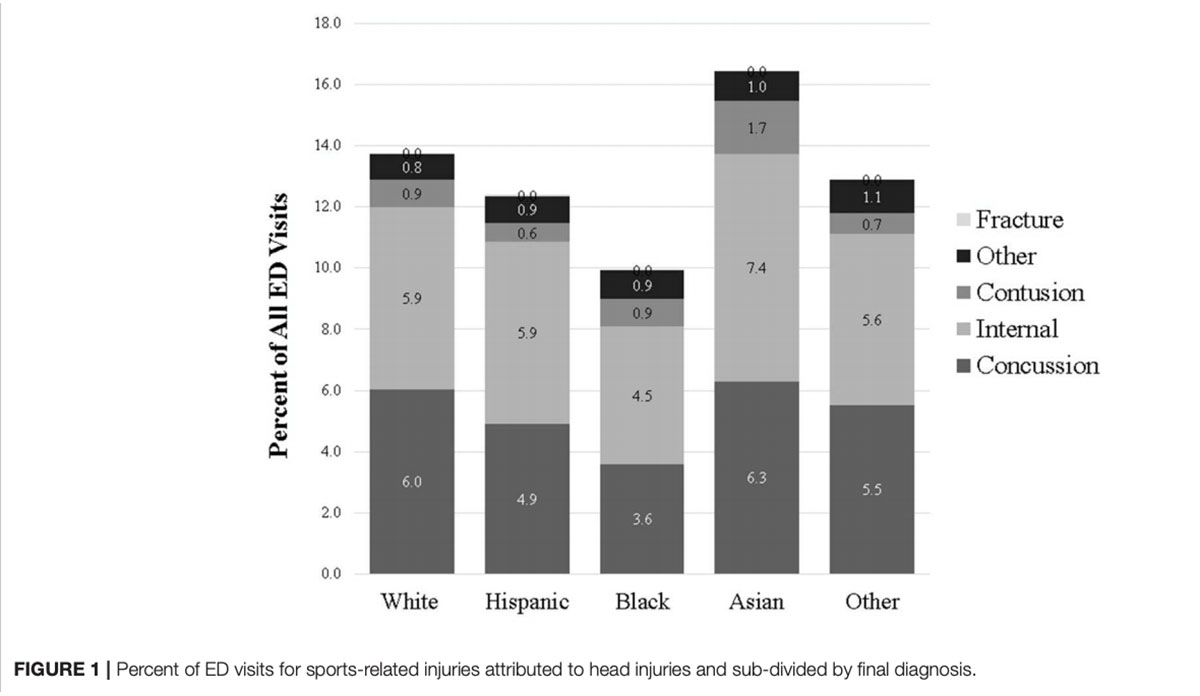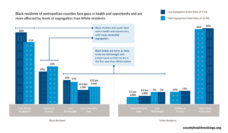Youth sports teach kids teamwork, responsibility, and perseverance. Yet sports-related injuries are the most common cause of concussions among children in the US. If head injuries go undiagnosed, returning to sports prematurely can result in severe neurologic disorders.
Most pediatric sports-related head injuries are diagnosed in the emergency department (ED). However, previous research has uncovered racial disparities in ED care when managing children’s head injuries. For instance, white children are more likely to receive neuroimaging during an ED visit for a head injury.
Lyons et al. conducted a study to see if race influences the likelihood of having an ED visit for a head injury, and if race influences the likelihood of being diagnosed with a concussion. The researchers observed pediatric sports-related ED visits from 2008 to 2017 using data from the National Electronic Injury Surveillance System.
The figure shows that Black athletes were less likely to be diagnosed with a head injury and less likely to be diagnosed with a concussion compared to white athletes. These findings were especially apparent if the Black athlete played basketball, football, soccer, or was a cheerleader – all sports with high rates of head trauma. Due to greater access to athletic trainers, white athletes (or their parents) may have better knowledge of concussion symptoms than Black athletes and insist on this diagnosis. Alternatively, provider racial bias may be present.
With a rising number of pediatric sports-related head injuries, concussion education and neuroimaging are critical. Racial biases can hinder the health of young athletes who have more to lose than just the game.
Lyons T, Miller K, Miller A, Mannix R. Racial and Ethnic Differences in Emergency Department Utilization and Diagnosis for Sports-Related Head Injuries. Frontiers in Neurology, 2019.














